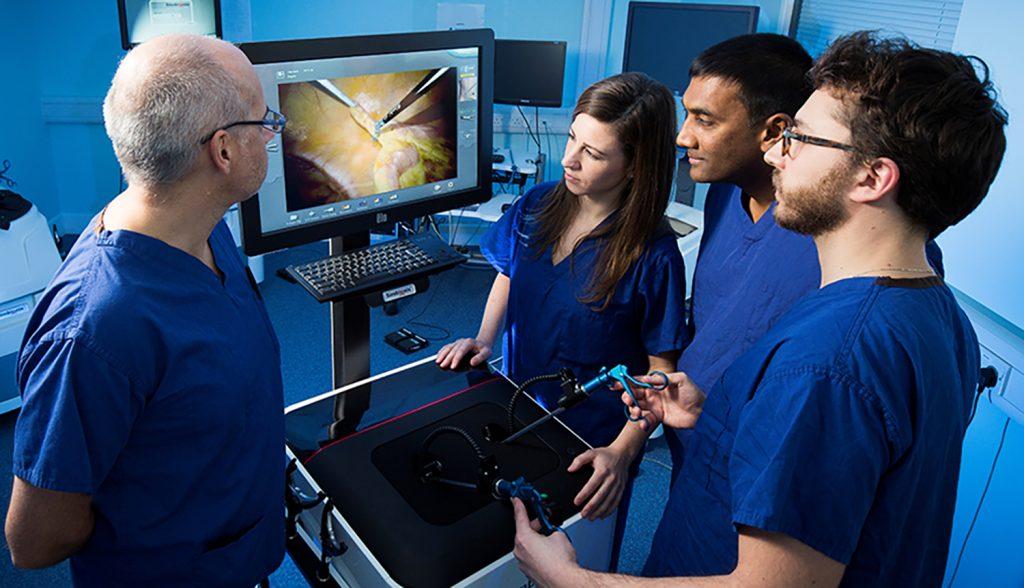A new surgery simulator has found a home at Gannon University and has already proved itself incredibly beneficial to the industrial engineering department.
The new surgery simulator, the Lap Mentor II, is located in the industrial engineering lab in the Center for Advanced Engineering and is currently being used for research by faculty and a few select students in the industrial engineering department.
Ikechukwu Ohu, Ph.D., an assistant professor and program director of the industrial engineering program at Gannon, recently teamed up with the biomedical engineering program to purchase the system from Simbionix (now 3D Systems).
According to 3D System’s website, the surgery simulator features 17 training modules and over 70 tasks and cases, including general, gynecology, urology, bariatric, colorectal and thoracic surgery.
So why is a surgery simulator needed for industrial engineering? Ohu pointed out that there is often a misunderstanding of what an industrial and systems engineer does. He said that industrial engineers aim to reduce waste and maximize efficiency in any existing process, and in his specific research of ergonomics, the current focus is laparoscopic surgery-related.
Ohu said that factors in the operating room such as the height of the operating platform, the instruments used and the posture of surgeons among other factors are possible sources of discomfort-induced inefficiencies. With the surgery simulator, industrial engineers can study these factors in a dry lab as well as the influences motion and muscle activity have on performance without having to be in a live operating room.
“While surgical procedures are being carried out, a patient’s life is at stake and it will be a burden on surgeons to have them distracted from their focus on a patient, while participating in surgical ergonomics studies,” Ohu said. “Having the surgery simulator in the industrial engineering lab gives faculty opportunities to carry out ergonomic and research investigations using a platform which, to a great extent, re-enacts real operating room procedures.”
Ohu said that the industrial engineering program at Gannon plans to collaborate with medical institutions nearby to do collaborative research on more advanced studies using the Lap Mentor II in the future.
Thomas Roache, a senior industrial engineering major, said he didn’t think he’d have the opportunity to pursue a degree in industrial engineering until Gannon began offering the program last year.
“It was a no-brainer to me,” Roache said. “I have always been interested in finding the most efficient ways of doing everything in my life and want to continue this mindset throughout my career.”
Roache is one of two industrial engineering students involved in a pilot study focused on performance optimization of three fundamentals of laparoscopic surgery (FLS) tasks, which medical students are tested on before getting their medical licenses. The tasks are Peg Transfer, Intracorporeal Suturing and Pattern Cutting.
In addition to the pilot study, Ohu said that Roache and his research partner Andrew Walker, also a senior industrial engineering major, have taken great strides in the design of a novel surgical grasper. Their design is prompted by the identification of ergonomic lapses in existing surgical graspers and the desire to create a more comfortable and viable laparoscopic surgery instrument.
Roache went as far as to say his work with the new surgery simulator has been some of the most rewarding academic work he has done in college.
“It’s the first time that I’ve been able to learn in a way that I can actually see the practicality and purpose for it,” Roache said. “Now, I know that sometimes it takes engineers going out and doing the work they’re involved with to get insight on its intricacies and what it takes to make something better.”
KYLE JOSEPH
[email protected]








